6. Recovering the Operating System
You can recover your server operating system or full server by
using a Windows SBS Installation DVD and a backup created with
Windows Server Backup. The Windows Installation disc allows access to the System
Recovery Options page in the Windows Recovery Environment.
Before you start, you need to determine the following:
Where you will recover to
What backup you will use
Whether you will perform an operating system–only or
full-server recovery
Whether you will reformat and repartition your
disks
Warning:
IMPORTANT When recovering
to a new hard disk, the new disk must be at least as large as the
disk that contained the volumes that were backed up—no matter what
size those volumes were. For example, if you backed up only one 50
GB volume on a 1-terabyte disk, you have to use a 1-terabyte or
larger disk when restoring.
To recover the operating system or the full server to a new
server or hard disk, using the Windows SBS Installation disk, follow
these steps:
Insert the Windows SBS Setup disc into the DVD drive, and
turn on the computer. The Install Windows Wizard appears.
Select the language options and then click Next.
On Install Now page, shown in Figure 3, select
Repair Your Computer.
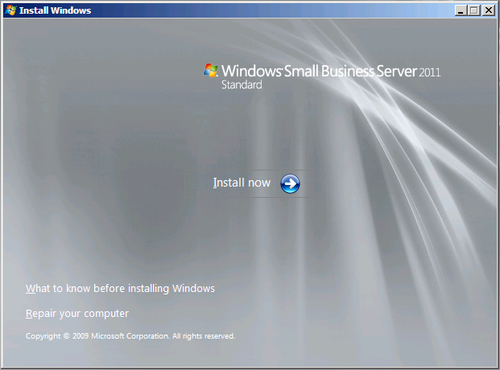
Setup searches the hard disk drives for an
existing Windows installation and then displays the results
in System Recovery Options, as shown in Figure 4.
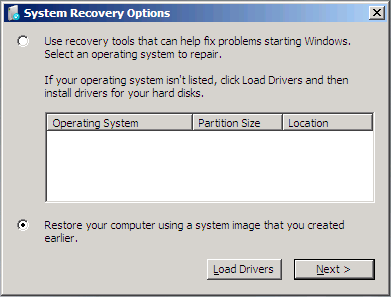
Click Next and Windows will attempt to locate an image to
recover. If you are recovering from a removable hard disk or DVD
image, it should locate it. But if you are recovering from an
internal disk or from a network share, it will fail and you’ll
see the error message shown in Figure 5.
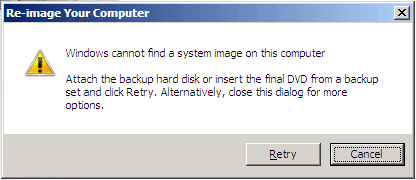
Click Cancel to open the Select A System Image Backup
page, shown in Figure 6.
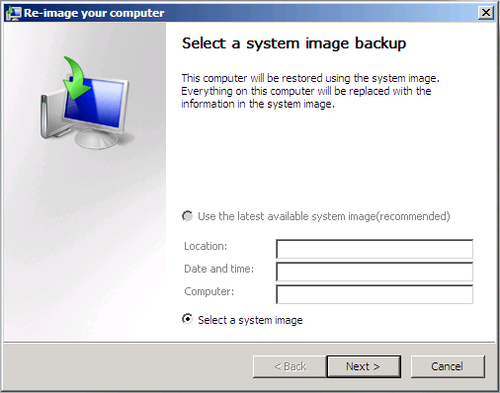
Click Next to open the Select The Location Of The Backup
For The Computer You Want To Restore page shown in Figure 7.
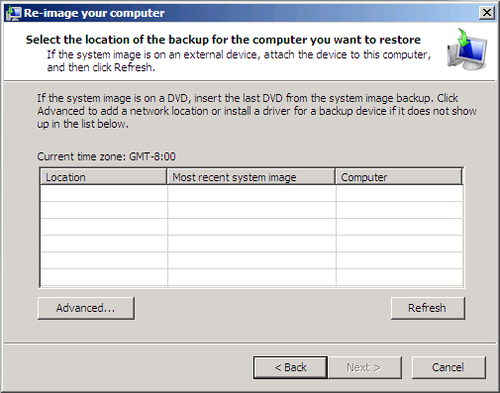
Attach a hard disk with the image on it and click Refresh,
or click Advanced to open the dialog box shown in Figure 8.
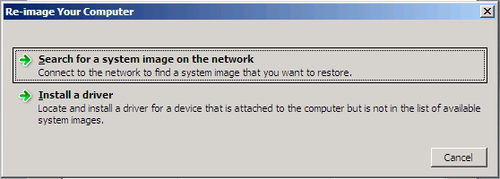
Click Search For A System Image On The Network. You’ll be
warned that this should only be done on a trusted network.
Security updates are not installed at this point, and the
Windows Firewall is not enabled.
Click Yes in the warning dialog box, and then specify the
location of the network folder to connect to, as shown in Figure 9.
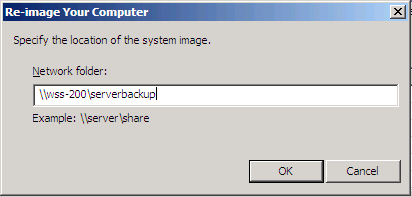
Click OK and then specify the user name and password to
connect to the network share as shown in Figure 10. On most
SBS networks, this will have to be a local
computer account on the remote computer because there will not
be a domain controller to authenticate you.
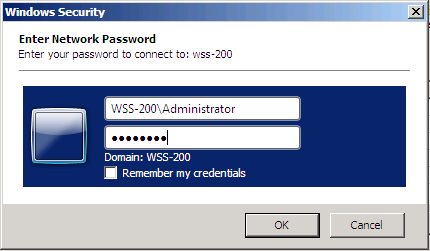
Select the computer that you want to restore, as shown in
Figure 11.
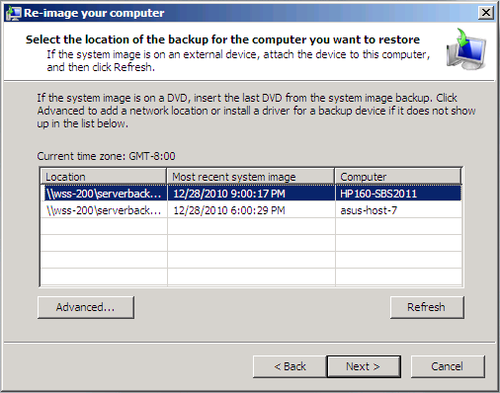
Click Next to open The Select The Date And Time Of
System Image To Restore page, shown in Figure 12.
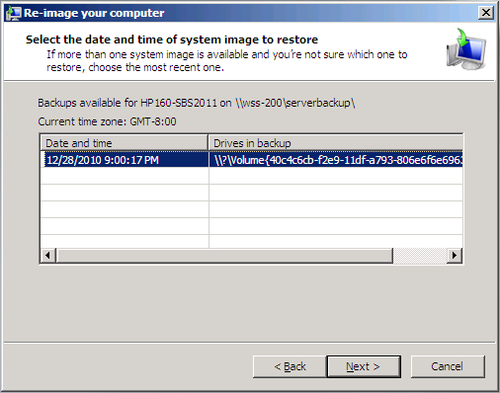
Click Next to open the Choose Additional Restore Options
page. On this page, you can select to format and partition disks
if the wizard sees sufficient disks available, or select Only
Restore System Drives if you want to just restore the drives
required to run Windows. You can restore data drives after SBS is
restored.
On the confirmation page, verify that the actions are
correct and click Finish.
You’ll be warned that all disks used for the restore will
be formatted. Click Yes and the restore will start.
7. Restoring a Backup Catalog
The details of your backups are stored in a file called a
backup catalog. This file contains information
about what volumes are backed up and where they’re located.
Windows Server Backup stores the catalog in the same
place that you store your backups. If the catalog file is corrupted,
Windows Server Backup sends you an alert and an event
is added to the event log (Event 514). Before you can perform
additional backups, the catalog must be restored or
deleted.
If you have no backups that you can use to recover the
catalog, the corrupted file must be deleted. This means information
about previous backups is lost and the backups can’t be accessed
using Windows Server Backup. Therefore, it’s important to create a
new backup immediately after deleting the catalog file.
Note:
The Catalog Recovery Wizard is available only when
Windows Backup Server detects that the catalog file is
corrupted.
To recover a backup catalog, follow these steps:
Open the Administrative Tools menu, and click Windows Server
Backup.
In the Actions pane, under Windows Server Backup, click
Recover to start the Catalog Recovery Wizard.
On the Specify Storage Type page, select one of the
following:
If you don’t have a backup to use to recover the
catalog and you just want to delete the catalog, click I
Don’t Have Any Usable Backups, click Next, and then click
Finish.
If you do have a backup that you can use, specify
whether the backup is on a local drive or remote shared
folder and then click Next.
Do one of the following:
On the Select Backup Location page, if the backup is
on a local drive (including DVDs), select the drive that
contains the backup that you want to use from the drop-down
list. If you are using DVDs, make sure the
last DVD of the series is in the drive.
Click Next.
If the backup is on a remote shared folder, on the
Specify Remote Folder page, type the path to the folder that
contains the backup that you want to use and then click
Next.
A message informs you that backups taken after the backup
that you are using for the recovery will not be accessible.
Click Yes.
On the Confirmation page, review the details and then
click Finish to recover the catalog.
On the Summary page, click Close.
After the catalog recovery is completed or you have deleted
the catalog, you must close and then reopen Windows Server Backup to
refresh the view.